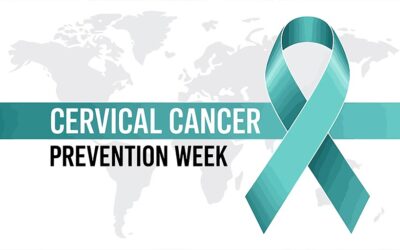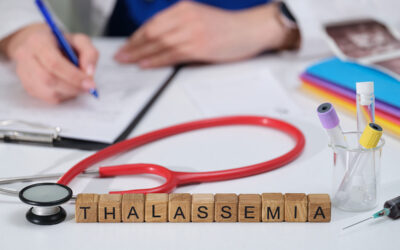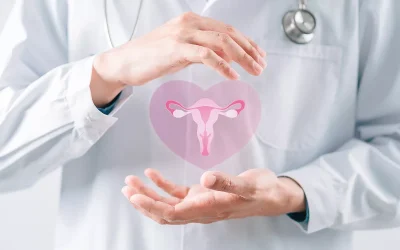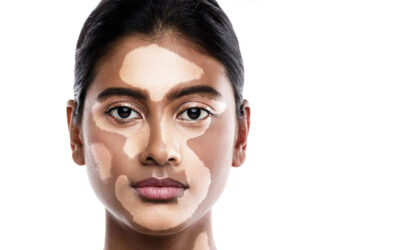Understanding Blepharoplasty (Eyelid Surgery): Types, Benefits, and Recovery

The skin around the eyes is delicate and one of the first areas to show signs of ageing or tiredness. In some cases, the eyelids may become puffy or begin to droop, affecting overall appearance. In others, these changes can interfere with vision and lead to discomfort. This is where blepharoplasty, commonly known as eyelid surgery, plays an important role. Whether done for aesthetic enhancement or medical reasons, blepharoplasty has become a widely accepted and safe procedure. Further on this topic, this guide will cover what blepharoplasty involves, who may benefit from it, and what to expect before and after the surgery.
Table of Contents
ToggleWhat is Blepharoplasty?
Blepharoplasty is a surgical procedure that aims to improve the appearance or function of the eyelids. It involves removing or repositioning excess skin, muscle, or fat from the upper or lower eyelids, depending on the individual’s needs. In many cases, blepharoplasty is performed for cosmetic reasons, such as creating a more youthful and refreshed appearance. However, it is also commonly done for medical purposes, particularly when sagging upper eyelids begin to interfere with vision. The procedure can address puffiness, droopiness, under-eye bags, or folds that develop due to age, genetics, or other conditions.
Blepharoplasty may be performed on the upper eyelids, lower eyelids, or both, depending on the patient’s specific needs.
Types of Blepharoplasty
Blepharoplasty is not a one-size-fits-all procedure. Depending on the concern and the area being treated, the surgery may target the upper eyelids, lower eyelids, or involve reconstructive correction. Each type addresses specific issues related to eyelid appearance and function.
Upper Blepharoplasty
This procedure focuses on correcting excess skin or fat on the upper eyelids. It is commonly performed to treat drooping lids that affect appearance or obstruct peripheral vision. In some cases, muscle tightening may also be done to improve eyelid support.
Lower Blepharoplasty
This targets puffiness, under-eye bags, or sagging skin beneath the eyes. It may involve the removal or repositioning of fat, as well as the tightening of the skin or muscle to create a smoother and firmer under-eye area.
Reconstructive Blepharoplasty
Performed for medical or structural reasons, this type of surgery may be necessary after trauma, tumour removal, or in cases of eyelid malposition. The aim is to restore both function and appearance, often as part of a larger reconstructive plan.
Double Eyelid Surgery (if relevant)
Popular in some ethnic groups, this procedure creates a visible crease in the upper eyelid for those who naturally lack one. It is primarily cosmetic and tailored to individual preferences.
Cosmetic and Functional Benefits of Blepharoplasty
Blepharoplasty offers more than just cosmetic enhancement. While many opt for the procedure to achieve a refreshed and youthful appearance, it also provides functional improvements, especially in cases where sagging eyelids interfere with daily activities.
Cosmetic Benefits
- More youthful eye contour by reducing droopiness and puffiness
- Smoother under-eye area, improving the appearance of bags or shadows
- Refined facial expression, making the eyes appear more alert and rested
- Boost in confidence, particularly for individuals concerned about tired or aged appearance
Functional Benefits
- Improved vision, especially peripheral vision, by removing overhanging skin
- Relief from eye strain, heaviness, or fatigue caused by droopy eyelids
- Better fit for eyeglasses, in cases where loose skin causes discomfort
- Reconstruction after trauma or surgery, restoring both eyelid appearance and function
Whether performed for medical reasons or aesthetic goals, blepharoplasty can have a significant impact on daily comfort, vision quality, and self-image.
Who Can Benefit from Blepharoplasty?
Blepharoplasty is suitable for individuals experiencing changes in the eyelids due to ageing, genetics, or medical conditions. While many seek it for cosmetic reasons, the procedure also offers important functional benefits.
People who may benefit include:
- Individuals with sagging or drooping upper eyelids that make the eyes appear tired or aged, or obstruct vision during daily tasks such as reading or driving.
- Those with puffiness or bags under the eyes, often caused by fat deposits or weakening muscles around the lower eyelids.
- People with eyelid asymmetry or deformities, which may result from birth defects, previous surgery, or trauma.
- Individuals with loose skin on the upper eyelids that interferes with wearing glasses or causes discomfort.
- Patients requiring reconstructive eyelid surgery following injury, tumour removal, or other medical conditions affecting eyelid function or appearance.
A detailed medical evaluation helps determine whether the goal is cosmetic enhancement, functional correction, or both.
What Happens During the Procedure?
Blepharoplasty is typically a short surgical procedure, but it begins with a careful evaluation to ensure safety and desired results. Understanding what the process involves can help patients feel more prepared and informed.
Pre-Surgical Evaluation
Before the procedure, a thorough consultation is carried out. The surgeon assesses eyelid structure, skin condition, muscle tone, and vision. Medical history, including any eye-related conditions, is reviewed to plan the most suitable surgical approach.
Anaesthesia
Blepharoplasty is usually performed under local anaesthesia with sedation, though general anaesthesia may be used in certain cases or when combined with other facial procedures.
Duration and Surgical Steps
The procedure generally takes 1 to 2 hours, depending on whether both upper and lower eyelids are being treated.
- For upper blepharoplasty, an incision is made along the natural eyelid crease to remove or reposition fat, muscle, and excess skin.
- For lower blepharoplasty, the incision is usually made just below the lash line or inside the lower eyelid (transconjunctival approach), depending on the technique used.
- The incisions are closed with fine sutures, often resulting in minimal scarring.
Recovery and Aftercare
Recovery from blepharoplasty is usually smooth, especially when post-operative care instructions are followed carefully. Most patients can resume normal routines within a couple of weeks, though minor discomfort and visible signs of healing may persist initially.
Healing Timeline
- First few days: Mild swelling, bruising, and tightness around the eyes are common. These usually subside within 7–10 days.
- 1 week: Stitches (if non-dissolvable) are generally removed within 5–7 days.
- 2–3 weeks: Most of the visible signs of surgery fade, and patients can return to work or social activities.
- 1–2 months: The final results become more evident as tissues settle and scars fade.
Aftercare Tips
- Apply cold compresses for the first 48 hours to reduce swelling.
- Keep the head elevated while resting or sleeping.
- Use prescribed eye drops or ointments to prevent dryness or infection.
- Avoid rubbing the eyes or exposing them to dust, smoke, or strong sunlight.
- Refrain from using eye makeup or contact lenses until cleared by the surgeon.
- Follow up as scheduled to monitor healing and address any concerns.
Proper rest, hygiene, and protection during the recovery phase are essential to achieving the best outcome with minimal scarring or complications.
Risks and Safety Considerations
Blepharoplasty is generally considered a safe and effective procedure when performed by a qualified and experienced surgeon. However, as with any surgery, it carries certain risks and potential side effects that patients should be aware of.
Common and Temporary Side Effects
- Swelling and bruising around the eyes, usually resolving within 1–2 weeks
- Dryness or irritation in the eyes, which may require lubricating drops
- Mild discomfort or tightness, especially in the early healing phase
- Temporary blurred vision due to ointment or swelling
Less Common but Possible Risks
- Infection at the incision site
- Scarring, though minimal in most cases due to careful incision placement
- Asymmetry or uneven results, which may need revision in rare instances
- Difficulty closing the eyes completely, especially if too much skin is removed
- Changes in eyelid position (ectropion or retraction), more common in lower eyelid procedures
Choosing a skilled surgeon and following post-operative care instructions significantly reduces the likelihood of complications. Patients should always discuss their medical history, expectations, and concerns during the initial consultation.
Conclusion
Blepharoplasty is a safe and effective procedure that addresses both aesthetic concerns and medical needs related to the eyelids. With proper evaluation, realistic expectations, and attentive aftercare, blepharoplasty can significantly improve eye appearance and function, enhancing not just how the eyes look, but how they feel and perform in everyday life.
To learn more about eyelid surgery or to consult with a specialist, visit Graphic Era Hospital or book an appointment with our expert surgical team today.
Frequently Asked Questions
Is blepharoplasty a painful procedure?
Mild discomfort is common in the first few days after surgery, but it is usually well-managed with prescribed medication. Most patients describe the recovery as manageable rather than painful.
Will the surgery leave visible scars?
Incisions are placed along the natural creases of the eyelids, making scars barely noticeable once healed. With proper care, they fade significantly over time.
How long do the results of blepharoplasty last?
The results are typically long-lasting. While the natural ageing process continues, most people enjoy the benefits of blepharoplasty for many years without the need for repeat surgery.
Can both upper and lower eyelids be treated in the same procedure?
Yes, if needed, upper and lower blepharoplasty can be performed together during a single surgical session. This is often done to achieve balanced results and reduce overall recovery time.
Is blepharoplasty ever covered by insurance?
When performed for medical reasons, such as to correct vision obstruction or eyelid malposition, some insurance providers may offer partial or full coverage. Cosmetic blepharoplasty, however, is usually not covered.
By Specialities
- Bariatric Surgery
- Cancer Care
- Cardiology
- Dental
- Dermatology
- Diabetes & Endocrinology
- Endocrinology and Diabetes
- ENT (Ear Nose Throat)
- Eye Care
- Gastroenterology
- Haematology
- Health Care
- Health Tips
- Hematology
- Hepatology
- Internal Medicine
- Mental Health and Behavioural Sciences
- Metabolic
- Neonatology
- Nephrology
- Neurology
- Nutrition & Dietetics
- Obstetrics & Gynaecology
- Oncology
- Ophthalmology
- Orthopaedics
- Paediatric
- Physiotherapy & Rehabilitation
- Plastic and Reconstructive Surgery
- Psychology
- Pulmonology
- Rheumatology
- Spine
- Urology
Recent Posts
- Understanding Frozen Shoulder: Causes, Symptoms, and Treatments
- Postpartum Depression: What Families Should Know
- Cervical Cancer Prevention Week 2026: A Global Call to Prioritise Cervical Health
- Struggling with an Enlarged Prostate? Discover How Your Diet Can Help
- Knee Pain in Young Adults: Causes, Symptoms, and Treatment Options
Need expert medical advice?
Share your details and our healthcare specialists will reach out to assist you.
By proceeding, you acknowledge and agree to our Privacy Policy, Terms of Use, and Disclaimer.


















